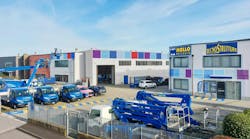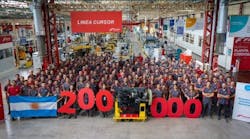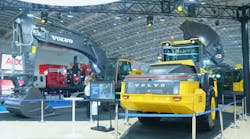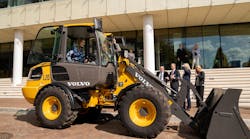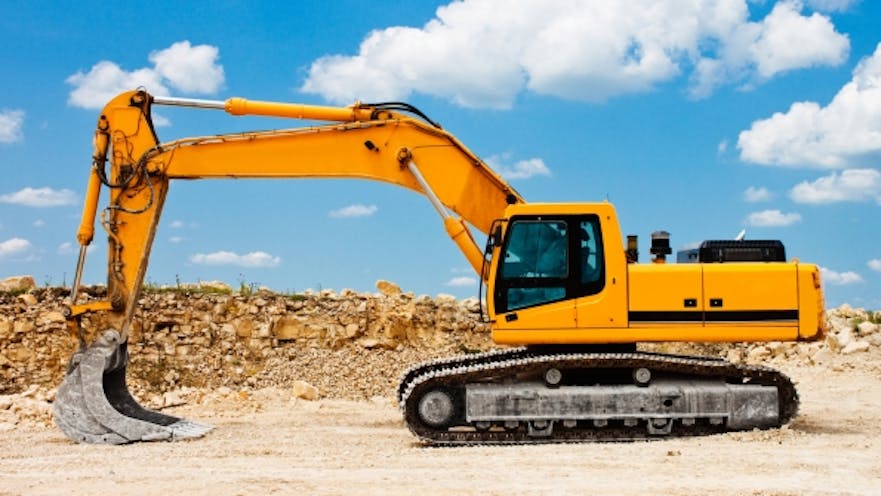Both excavators and mechanical trenching tools serve different purposes in the mining industry. When you look at trenchers and excavators side by side you can see how each category of machinery differs. Each piece serves its own purpose and can be used to complete a variety of tasks.
This article covers some of the most common pieces of machinery seen in the mining industry to give you a better understanding of how they can be utilized.
Mechanical Excavators
These excavation tools are often used for small to medium earthworks. Due to their the versatility and size, they can often be used to complete more complicated tasks compared to trenching tools.
Tracked Excavator
Tracked excavators are great for the mining industry in small soil excavation works. They use continuous tracks for movement which is perfect for slippery and uneven surfaces. Also, known as a track hoe, it has one long arm stemming from the cabin to scoop up and move materials from the ground to a separate location. The machine can rotate in a full 360-degree motion with gives it great versatility and movement.
The tracked excavator is one of the fundamental pieces of machinery in the mining industry. From small mini excavators to large mass excavators, their versatility and quick soil excavating ability have made them a favourite among workers. Tracked excavators are often used to dig trenches, holes and foundations.
Back Hoe Excavator
Although they have somewhat similar functions, the backhoe excavator has a very different design to the tracked excavator. Back hoe excavators have the hoe attached to the rear of the cabin which has a motion of around 180-200-degrees. Attached to the front of the cabin is a loader bucket. The loader bucket is usually not rotated when in use, but rather the vehicle moves forward to scoop the materials upwards.
Back hoe excavators are very common due to their multiple operations of both a rotating hoe and a wide loader. The machine can both dig small excavations, trenches and holes while having the ability to load the soil onto a truck. Although it uses wheels to move around, for mining work on flatter ground, it is still a great versatile piece of machinery.
Tracked Bulldozer
Bulldozers are known for their sheer power in moving and lifting soil from the surface of the ground. They have a hard steel plate at the front with a sharp edge to break up weak rocks and hard surfaces. The plate can be raised or lowered to match the terrain using hydraulic arms. On the rear, bulldozers are typically equipped with a few claw-like devices to help loosen up the tough ground which can also be raised and lowered to suit requirements.
To help with strong traction on the ground, bulldozers usually have continuous track movement so it can remain stable while pushing large loads. Due to their strong and powerful abilities, they are often seen to be one of the most heavy-duty machines on the market.
Mechanical Trenching Tools
Compared to using an excavator, trenching tools can make long trenches at a much faster rate. They are often used in the construction of pipelines for mining infrastructure. Trenching machinery can be used to make both shallow and deeper long trenches at widths suitable for most pipeline projects.
Due to the size and capabilities of these mammoth machines, it is important that they are only dealt with by experienced construction professionals. Two of the most common pieces of industrial trenching machinery include wheeled and chain trenchers.
Wheeled Trenchers
While both wheeled and chain trenchers are very similar, the main difference is the shape of the trenching device. Wheeled trenchers have a toothed metal wheel as a trenching tool attached to the cabin. The trenching wheel can be shifted either up or down to slowly make its way into the ground.
They are available in both wheeled and tracked forms, however, due to its stability on rough surfaces, mining companies usually opt for tracked movement. Wheeled trenchers are great tools to cut into the ground and make a long trench while slowly moving forward in a line.
Chain Trenchers
Known to be the heavy-duty workhorse of trenching, chain trenchers have a striking resemblance to an oversized chainsaw. The machine has a toothed metal track that continuously rotates around a longer rounded frame known as the boom. By slowly creeping forward as the teeth dig away at the dirt, the machine can dig a long straight trench.
Chain trenches can dig both narrow and wide trenches and can dig down quite deep. The sharp teeth can dig through much harder materials by rotating with rapid force. Most of the larger chain trenchers use a continuous track to move slowly forward while it digs.
As you can see, although many excavation and trenching tools have similarities, they have quite varied applications. Depending on the needs of your task at hand, you may need one piece of machinery or even a few different types. If you’re ever in doubt about what piece of machinery is right for your needs, have a chat to an experienced provider.
Author Bio
This article is written by Alex Hamilton, who writes on behalf of DM Civil – Providers of safe, tailored and sustainable civil contracting services to Australia’s leading construction companies. You can catch him on Google+.

